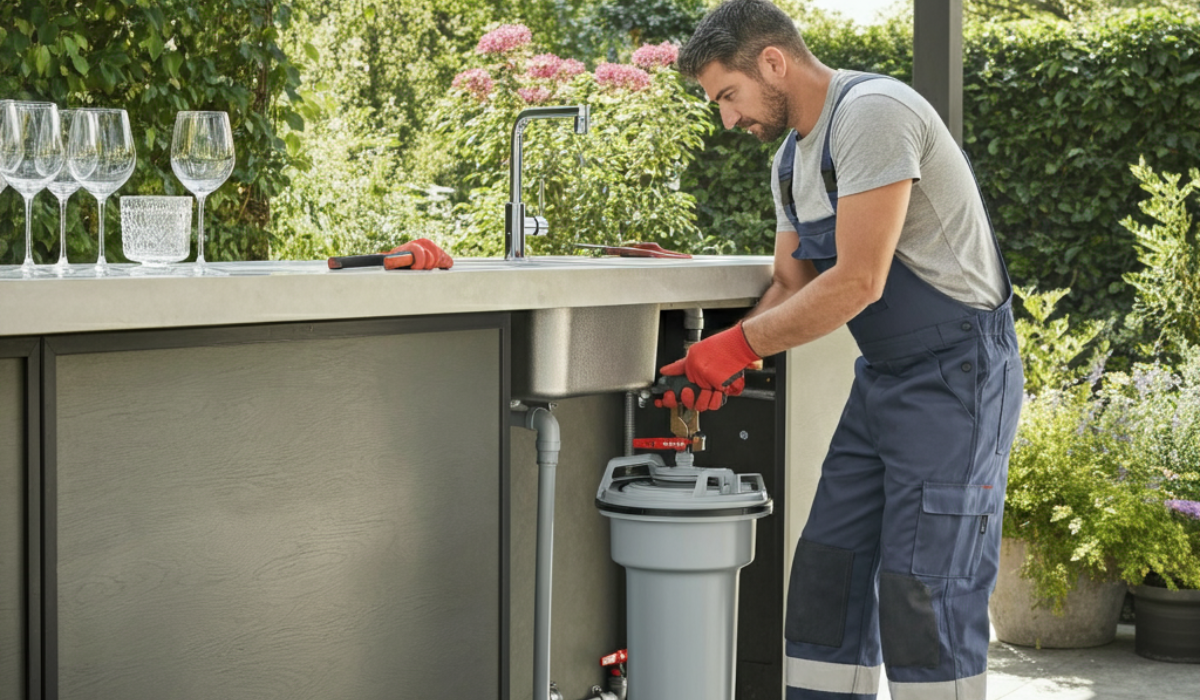Why a Grease Trap is Essential for Your Outdoor Bar
Operating an outdoor bar comes with particular challenges, and plumbing isn’t any exception. One of the most vital elements to don’t forget is coping with wastewater correctly, in particular when it is encumbered with grease, oils, and fats. Installing a grease trap for out of doors bars with sinks that handle food and beverage operations isn’t always just an alternative. It’s a necessity.
Investing in a grease trap prevents costly plumbing problems and ensures compliance with nearby environmental rules, safeguarding your business’s popularity. This manual explains a grease trap, how it works, and why it is an essential device for discharging an outdoor bar sink.
What is a Grease Trap & How Does It Function?
A grease trap, additionally known as a grease interceptor, is a plumbing device designed to seize fat, oils, and greases (FOGs) earlier than they enter the main sewer lines. Left unchecked, FOGs can solidify and clog pipes, leading to excessive preservation troubles and feasible fines for violating neighborhood wastewater guidelines.
The working mechanism of a grease trap is surprisingly simple:
- Separation: Wastewater flows into the grease lure, in which heavier meals particles sink to the bottom and oils and grease flow to the pinnacle.
- Filtration: A middle layer of water can move through while the grease and food solids are retained in the trap.
- Discharge: The treated, FOG-free water exits the grease trap and continues safely to the sewage system.
Why Using a Grease Trap is Crucial for Outdoor Bar Sinks
1. Environmental Responsibility
Improper wastewater disposal has a tremendous environmental effect. FOGs can clog municipal sewer traces, disrupt sewage remedy approaches, and even lead to water pollutants. Installing a grease trap is an environmentally pleasant solution and is frequently required by way of fitness and protection rules in many regions.
2. Prevent Plumbing Issues
Outdoor bars rely on smooth and efficient drainage. A grease trap keeps your plumbing system functioning without interruptions, preventing backups caused by grease build-ups. Avoiding such issues saves your business from costly repairs and downtime.
3. Regulatory Compliance
Most municipalities mandate grease traps for institutions that cope with food and liquids. Compliance with those regulations facilitates keep away from hefty fines or maybe compelled commercial enterprise closure.
4. Enhanced Cleanliness and Guest Experience
A well-maintained grease trap reduces unpleasant odors and prevents unsanitary conditions in your outdoor bar. This contributes to an inviting atmosphere and ensures a positive experience for your guests.
Steps to Install a Grease Trap for Your Outdoor Bar Sink
Proper set up of a grease trap is vital to ensure it capabilities efficaciously. While you could choose a DIY technique, hiring a professional plumber is recommended for accuracy and compliance with neighborhood codes.
Step 1: Assess Your Outdoor Bar’s Needs
The size and capacity of your grease trap depend on the volume of wastewater your outdoor bar produces. Consider the number of sinks, the volume of dishes or beverages handled, and the space available for installation.
Step 2: Identify the Ideal Location
Choose a location close to your outdoor bar sink to minimize piping requirements. Ensure the grease trap is easy to access for regular cleaning and maintenance.
Step 3: Mark the Installation Site
Mark the area where the grease trap will be placed. This sets the stage for a smooth excavation and installation process.
Step 4: Excavate the Site
Excavate a section of the ground to create space for the grease trap. Ensure the foundation is stable and at a level that prevents structural issues later.
Step 5: Connect the Plumbing
Attach the drainage line from your outdoor bar sink to the grease trap. Ensure the pipes have the appropriate slope to facilitate smooth water flow.
Step 6: Secure the Trap and Backfill
Once the grease trap is in place, backfill the excavated area to secure it. Make sure the trap lid is accessible for cleaning and inspections.
Step 7: Inspection and Compliance
Have a local inspector review the installation to confirm it complies with regional regulations. This step ensures your grease trap is fully operational and compliant.
Maintaining Your Grease Trap for Long-Term Efficiency
Regular protection is essential for keeping your grease lure in pinnacle circumstances. Neglected grease traps can overflow, leading to plumbing issues and sanitary worries.
How Often Should You Service a Grease Trap?
- Empty the trap when the accumulated grease and solids reach 25% of its capacity. This typically ranges from every 1 to 2 months, depending on usage.
- For high-volume outdoor bars, consider inspecting and cleaning the trap once a month.
DIY Maintenance
- Scrape out solids and grease manually using appropriate safety gear.
- Use a hose or pressure washer to clean the trap’s interior walls.
Professional Maintenance Services
Hiring a professional grease trap cleaning service ensures thorough cleaning and inspection. They can identify potential issues early, preventing future problems.
FAQs About Using A Grease Trap To Discharge Outdoor Bar Sink
1. Do I Need a Grease Trap for My Outdoor Bar Sink?
If your outside bar sink offers with meals or beverage coaching, putting in a grease lure is extraordinarily advocated and often required via local laws.
2. Can I Install a Grease Trap on My Own?
While a DIY installation is possible, hiring a professional plumber ensures proper setup, compliance with regulations, and long-term reliability.
3. How Can I Tell if My Grease Trap Needs Cleaning?
Signs include slow drainage, foul odors, and grease or food solids overflowing from the trap. Regular inspections can help prevent these issues.
4. What Size Grease Trap Do I Need?
The size depends on the water flow rate and the grease/oil volume your sink produces. Consulting with a professional can help determine the right capacity.
5. Are Grease Traps Environmentally Friendly?
Yes! Grease traps reduce FOG pollution, keeping sewer systems functional and wastewater treatment processes efficient.
Setting Your Outdoor Bar Up for Success
Installing a grease trap to your outdoor bar sink is extra than just a sensible selection. It’s an investment in performance, sustainability, and regulatory compliance. By handling wastewater effectively, you may protect your plumbing system and create a cleanser, greater inviting space on your visitors.
Take motion nowadays to make certain your outdoor bar operates at peak overall performance. For professional steerage on grease trap installation and renovation, please seek advice from a licensed plumber or discover more of our professional assets!

